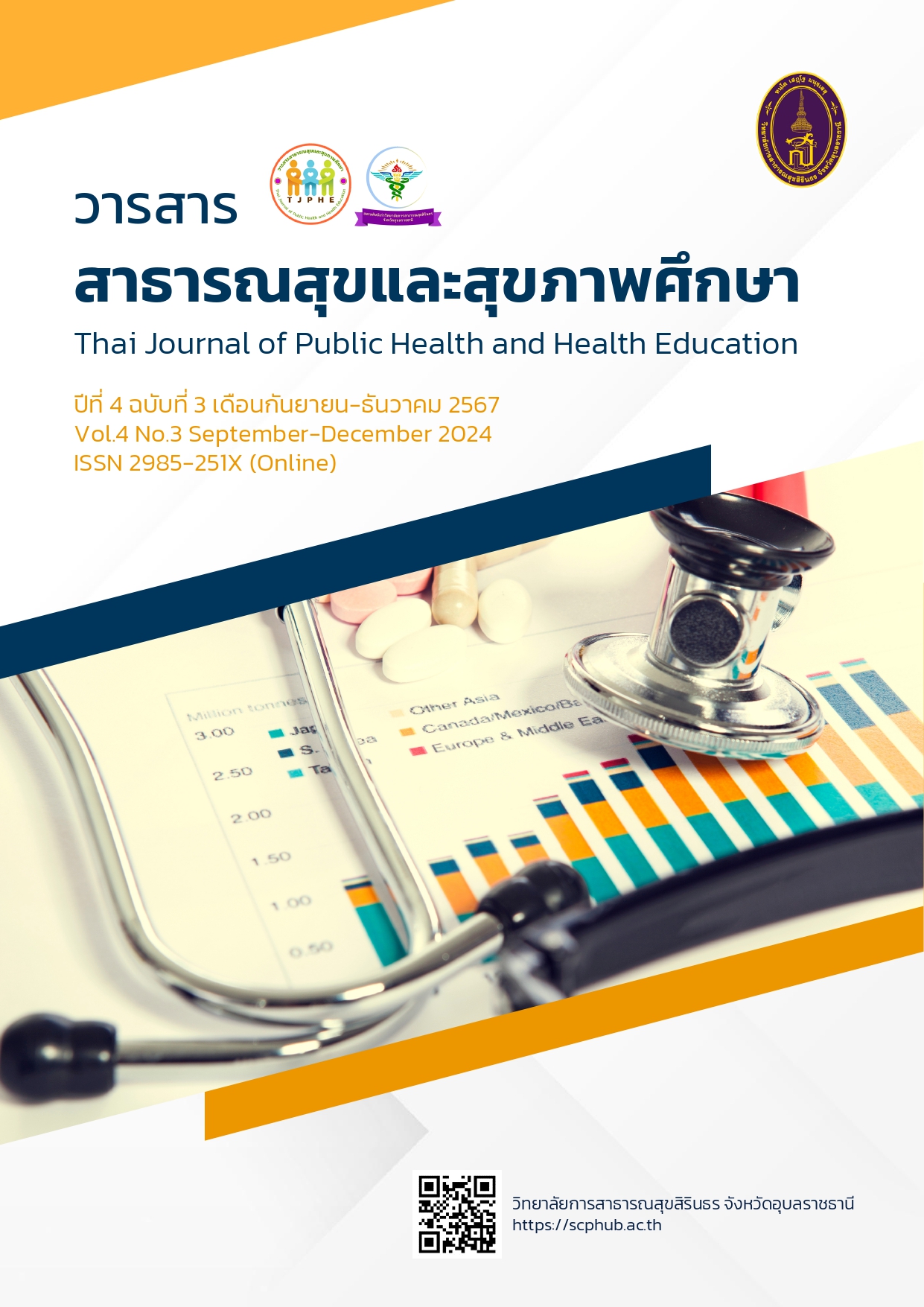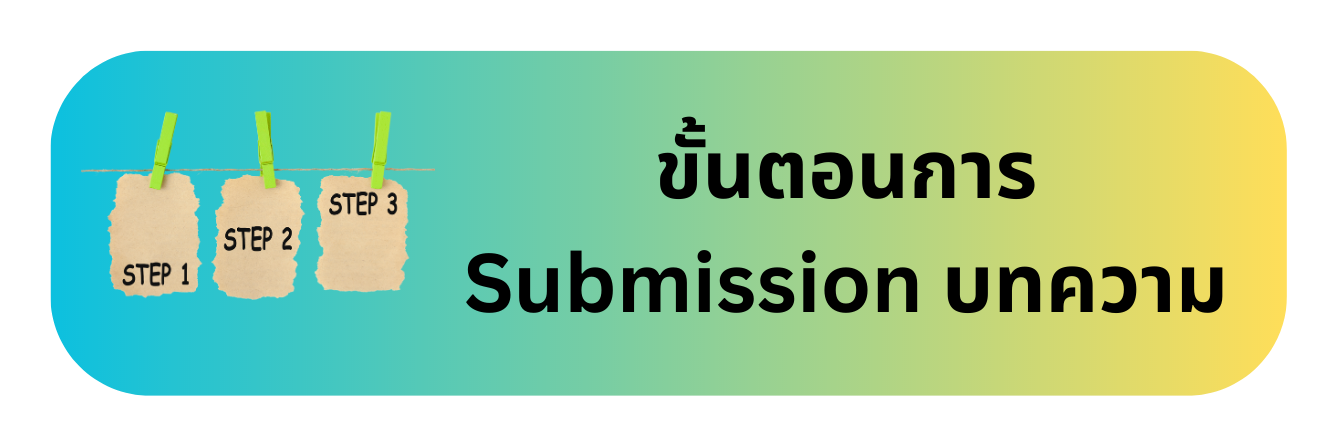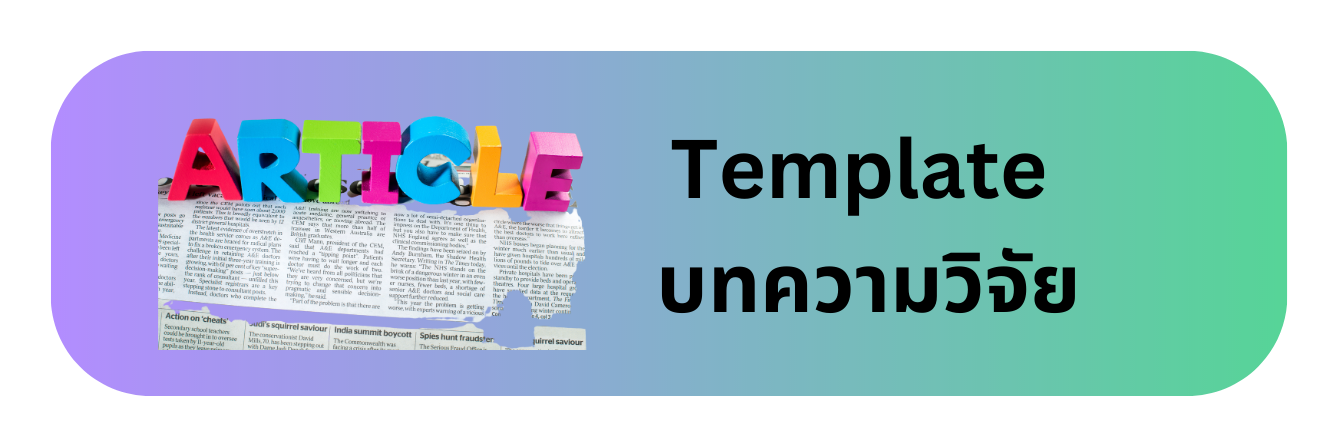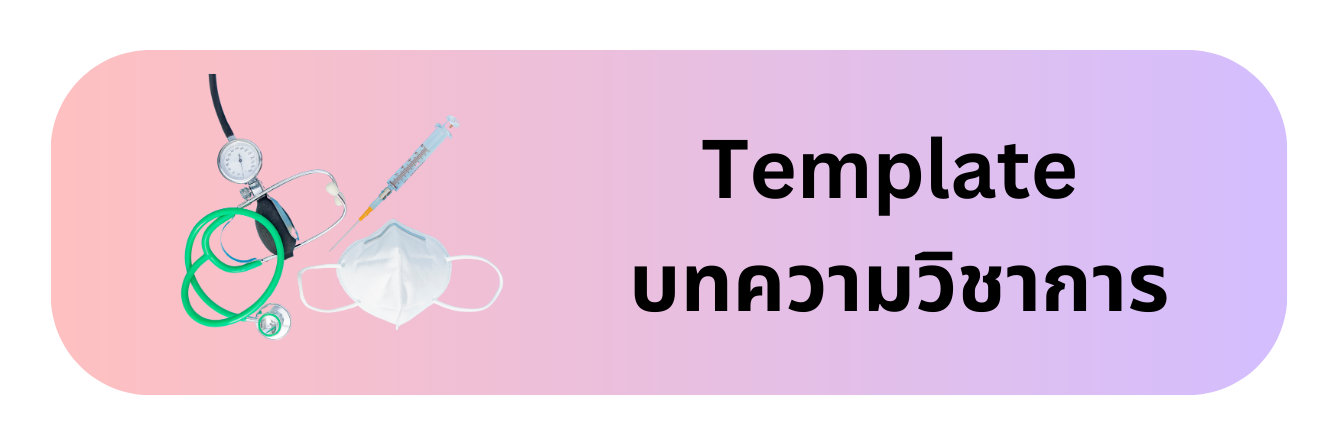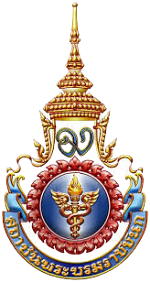รูปแบบการบริโภคอาหารสำหรับการควบคุมระดับน้ำตาลในเลือดของผู้ป่วยเบาหวานชนิดที่ 2 และกลุ่มเสี่ยง: การทบทวนวรรณกรรมอย่างเป็นระบบ
คำสำคัญ:
การทบทวนวรรณกรรมอย่างเป็นระบบ, การควบคุมระดับน้ำตาลในเลือด, รูปแบบการบริโภคอาหาร, ผู้ป่วยเบาหวานชนิดที่ 2 และกลุ่มเสี่ยงบทคัดย่อ
การทบทวนงานวิจัยอย่างเป็นระบบครั้งนี้ มีวัตถุประสงค์เพื่อรวบรวมหลักฐานเกี่ยวกับรูปแบบการบริโภคอาหารสำหรับการควบคุมระดับน้ำตาลในเลือดของผู้ป่วยเบาหวานชนิดที่ 2 และกลุ่มเสี่ยง ดำเนินการวิจัยโดยการสืบค้นงานวิจัย เอกสารที่เกี่ยวข้องจากฐานข้อมูลอิเล็กทรอนิกส์ที่สำคัญของงานวิจัยทางการแพทย์และสาธารณสุขที่ได้รับการเผยแพร่เป็นภาษาไทยและภาษาอังกฤษในฐานข้อมูลอิเล็กทรอนิกส์ ได้แก่ PubMed Thai Journal Online (ThaiJo) google scholar Google ตั้งแต่ ปี พ.ศ. 2556 ถึง พ.ศ. 2566 ตามกระบวนการทบทวนงานวิจัยอย่างเป็นระบบของสถาบันโจแอนนาบริกส์ ผลการวิจัยที่ผ่านเกณฑ์คัดเข้า จำนวน 8 ชื่อเรื่อง และสามารถสรุป ลักษณะรูปแบบของอาหารได้ 3 รูปแบบ คือ รูปแบบอาหารตะวันตก (Western dietary patterns) รูปแบบอาหารดั้งเดิม (Traditional dietary patterns) และรูปแบบอาหารเพื่อสุขภาพ (Healthy dietary patterns) โดยแสดงให้เห็นถึงลักษณะสำคัญ 2 ประเด็น คือ อาหารรูปแบบอาหารตะวันตก เป็นปัจจัยเสี่ยงในการเพิ่มระดับน้ำตาลในเลือดและเป็นเบาหวาน ในขณะที่รูปแบบการรับประทานอาหารที่ดีต่อสุขภาพ อาจป้องกันการเกิดระดับน้ำตาลในเลือดสูงได้ การศึกษาครั้งนี้สะท้อนให้เห็นถึงพฤติกรรมการบริโภคอาหารของผู้ป่วยเบาหวานชนิดที่ 2 และกลุ่มเสี่ยงที่มีความหลากหลายแตกต่างกันตามบริบทของพื้นที่และสถานะสุขภาพ ซึ่งจะนำไปสู่ความแตกต่างอย่างมากในรูปแบบการเลือกบริโภคอาหาร แม้ว่าจะทราบถึงรูปแบบอาหารที่ส่งผลต่อระดับน้ำตาลในเลือดและโรคเบาหวานแล้วก็ตาม แต่ก็ยังต้องขึ้นอยู่กับผู้ป่วยเองที่จะเลือกรูปแบบในการรับประทานอาหารที่เหมาะสมกับภาวะสุขภาพของตนเอง
Downloads
เอกสารอ้างอิง
กรมควบคุมโรค กองโรคไม่ติดต่อ. (2562). รายงานสถานการณ์โรค NCDs เบาหวาน ความดันโลหิตสูง และปัจจัยที่เกี่ยวข้อง พ.ศ. 2562 กลุ่มเทคโนโลยีระบาดวิทยาและมาตรการชุมชน กองโรคไม่ติดต่อ กรมควบคุมโรค กระทรวงสาธารณสุข.
กองโรคไม่ติดต่อ กรมควบคุมโรค กระทรวงสาธารณสุข. (2564). รายงานประจำปี 2564. กลุ่มยุทธศาสตร์ แผนและประเมินผล กองโรคไม่ติดต่อ. สำนักพิมพ์อักษรกราฟฟิคแอนด์ดีไซน์.
กองยุทธศาสตร์และแผนงาน สำนักงานปลัดกระทรวงสาธารณสุข. (2566). สถิติสาธารณสุข พ.ศ. 2565 (Public Health Statistics A.D. 2022.) สืบค้นจาก https://spd.moph.go.th/wp-content/uploads/2023/11/Hstatistic65.pdf
ธีรารัตน์ บุญกุณะ อุษณีย์ วรรณาลัย สุดวัลย์ สายสืบ และโอภาส ประมูลสิน. (2561). ความสัมพันธ์ระหว่างการรับรู้ภาวะเสี่ยงโรคเบาหวาน การจัดการตนเองด้านพฤติกรรมสุขภาพ และระดับน้ำตาลในเลือดของกลุ่มเสี่ยงโรคเบาหวานในอำเภอเมือง จังหวัดลำปาง. วารสารวิทยาลัยพยาบาลบรมราชชนนี อุตรดิตถ์, 10(2), 17-28.
วิชัย เอกพลากร. (2564). รายงานการสำรวจสุขภาพประชาชนไทยโดยการตรวจร่างกาย ครั้งที่ 6 พ.ศ. 2562-2563. สำนักพิมพ์อักษรกราฟฟิคแอนด์ดีไซน์.
ศศิวรรณ ขันทะชา และเบญจา มุกตพันธุ์. (2563). ความสัมพันธ์ของพฤติกรรมการดูแลตนเองและความเชื่อเกี่ยวกับโรคเบาหวานกับการควบคุมระดับน้ำตาลในเลือดของผู้ป่วยเบาหวานชนิดที่ 2 ในพื้นที่ที่มีความหลากหลายเชื้อชาติ อำเภอนาแก จังหวัดนครพนม. ศรีนครินทร์เวชสาร, 36(1), 97-104.
สมาคมโรคเบาหวานแห่งประเทศไทย. (2566). แนวทางเวชปฏิบัติสำหรับโรคเบาหวาน 2566. บริษัทศรีเมืองการพิมพ์ จำกัด. สืบค้นจาก https://shorturl.asia/NhiB2
สำนักโภชนาการ กรมอนามัย กระทรวงสาธารณสุข. (2567). รายงานประจำปี สำนักโภชนาการ 2566. กลุ่มบริหารยุทธศาสตร์ สำนักโภชนาการ.
สุวัฒน์ ศิริแก่นทราย. (2562). ความเชื่อด้านสุขภาพที่มีความสัมพันธ์กับการควบคุมระดับน้ำตาลในเลือดของผู้ป่วยเบาหวานชนิดที่ 2 ตำบลกุดจิก อำเภอเมือง จังหวัดหนองบัวลำภู. วารสารวิชาการเซาธ์อีสท์บางกอก, 5(1), 55-68.
American Diabetes Association (2019). 3. Prevention or Delay of Type 2 Diabetes: Standards of Medical Care in Diabetes-2019. Diabetes care, 42(Suppl 1), S29–S33. https://doi.org/10.2337/dc19-S003
Beigrezaei, S., Ghiasvand, R., Feizi, A., & Iraj, B. (2019). Relationship between Dietary Patterns and Incidence of Type 2 Diabetes. International Journal of Preventive Medicine, 10, 122. https://doi: org/10.4103/ijpvm.IJPVM20617
Doostvandi, T., Bahadoran, Z., Mozaffari-Khosravi, H., Mirmiran, P., & Azizi, F. (2016). Food intake patterns are associated with the risk of impaired glucose and insulin homeostasis: a prospective approach in the Tehran Lipid and Glucose Study. Public Health Nutrition, 19(13), 2467–2474. https://doi: org/10.1017/S1368980016000616
Forouhi, N. G., Misra, A., Mohan, V., Taylor, R., & Yancy, W. (2018). Dietary and nutritional approaches for prevention and management of type 2 diabetes. BMJ (Clinical research ed.), 361, k2234. https://doi: org/10.1136/bmj.k2234
Hou, Y. C., Feng, H. C., Tzeng, I. S., Kuo, C. Y., Cheng, C. F., Wu, J. H., et al. (2020). Dietary Patterns and the Risk of Prediabetes in Taiwan: A Cross-Sectional Study. Nutrients, 12(11), 3322. https://doi: org/10.3390/nu12113322
International Diabetes Federation. (2017). Diabetes Atlas 8th edition. Retrieved from https://www .diabetesatlas.org/en/
International Diabetes Federation. (2021). Diabetes Atlas 10th ed. Retrieved from https://diabetes atlas.org/
Kotwas, A., Karakiewicz, B., Zabielska, P., Wieder-Huszla, S., & Jurczak, A. (2021). Epidemiological factors for type 2 diabetes mellitus: evidence from the Global Burden of Disease. Archives of Public Health, 79, 110. https://doi: org/10.1186/s13690-021-00632-1
Maghsoudi, Z., Ghiasvand, R., & Salehi-Abargouei, A. (2016). Empirically derived dietary patterns and incident type 2 diabetes mellitus: a systematic review and meta-analysis on prospective observational studies. Public Health Nutrition, 19(2), 230–241. https://doi: org/10.1017/S13689800 15001251
Ryu, H., Moon, J., & Jung, J. (2018). Influence of health behaviors and occupational stress on prediabetic state among male office workers. International Journal of Environmental Research and Public Health, 15(6), 1264. https://doi: org/10.3390/ijerph15061264
Shu, L., Shen, X. M., Li, C., Zhang, X. Y., & Zheng, P. F. (2017). Dietary patterns are associated with type 2 diabetes mellitus among middle-aged adults in Zhejiang Province, China. Nutrition Journal, 16(1), 81. https://doi: org/10.1186/s12937-017-0303-0.
Studart, E. P. M, Arruda, S. P. M., Sampaio, H. A. C., Passos, T. U., & Carioca, A. A. F. (2018). Dietary patterns and glycemic indexes in type 2 diabetes patients. Revista de Nutrição. 31(1), 1-12. https://doi: org/10.1590/ 1678-98652018000100001
The Joanna Briggs Institute. (2017). Critical appraisal tools. Retrieved from https://jbi.global/sites/default/files/2019-05/JBICriticalAppraisal-Checklist_for_Systematic_Reviews20170.pdf
van Eekelen, E., Geelen, A., Alssema, M., Lamb, H. J., de Roos, A., Rosendaal, F. R., et al. (2019). Sweet snacks are positively and fruits and vegetables are negatively associated with visceral or liver fat content in middle-aged men and women. The Journal of Nutrition, 149(2), 304–313. https://doi: org/10.1093/jn/nxy260
Wang, Z., Zou, Z., Wang, H., Jing, J., Luo, J., Zhang, X., et al. (2018). Prevalence and risk factors of impaired fasting glucose and diabetes among Chinese children and adolescents: a national observational study. The British Journal of Nutrition, 120(7), 813-819. https://doi: org/10.1017/ s0007114518002040
Walsh, E. I., Jacka, F. N., Butterworth, P., Anstey, K. J., & Cherbuin, N. (2017). The association between
Western and Prudent dietary patterns and fasting blood glucose levels in type 2 diabetes and normal glucose metabolism in older Australian adults. Heliyon, 3(6), e00315. https://doi: org/10.1016/ j.heliyon.2017.e00315
Yin, X., Chen, Y., Lu, W., Jin, T., & Li, L. (2020). Association of dietary patterns with the newly diagnosed diabetes mellitus and central obesity: a community-based cross-sectional study. Nutrition & diabetes, 10(1), 16. https://doi: org/10.1038/s41387-020-0120-y
Zaroudi, M., Yazdani Charati, J., Mehrabi, S., Ghorbani, E., Norouzkhani, J., et al. (2016). Dietary patterns are associated with risk of diabetes type 2: A population-based case-control study. Archives of Iranian Medicine, 19(3): 166 -172.
Zeng, Z., Jin, Y., Zheng, Y., Xiang, L., Yang, J., Peng, L., et al (2021). Interaction between overweight, obesity and smoking on the risk of pre-diabetes and type 2 diabetes in Guangdong, China. Retrieved 10 March 2021, from Research Square. https://doi: org/10.21203/rs.3.rs-301611/v1
ดาวน์โหลด
เผยแพร่แล้ว
รูปแบบการอ้างอิง
ฉบับ
ประเภทบทความ
สัญญาอนุญาต
ลิขสิทธิ์ (c) 2024 วิทยาลัยการสาธารณสุขสิรินธร จังหวัดอุบลราชธานี

อนุญาตภายใต้เงื่อนไข Creative Commons Attribution-NonCommercial-NoDerivatives 4.0 International License.
บทความที่ได้รับการตีพิมพ์ในวารสาร วารสารสาธารณสุขและสุขภาพศึกษา (Thai Journal of Public Health and Health Education) เป็นลิขสิทธิ์ของ วิทยาลัยการสาธารณสุขสิรินธร จังหวัดอุบลราชธานี

